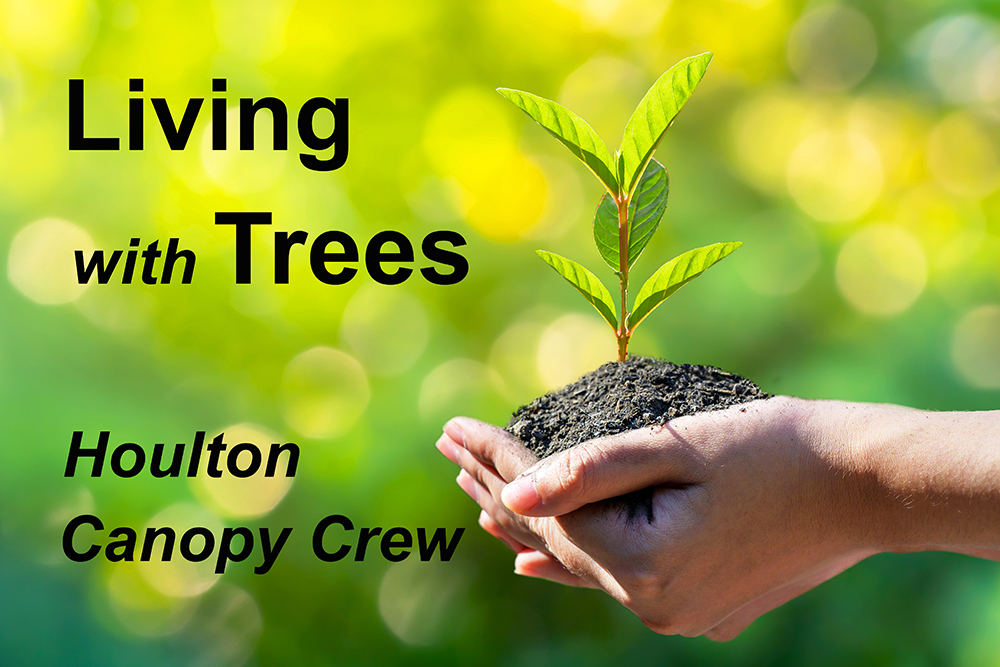Why invite birds to your yard? Birds make great yard guests for many reasons. We know that the right trees on your property can increase its value, but adding birds to those trees can give an additional boost.
According to the Arbor Day Foundation, studies show birds’ presence may even enhance the physical, intellectual and social development of children. Besides being a joy to look at and listen to, many birds are also voracious consumers of insects. What more could you ask for? Unfortunately, there are none that weed or mow.
How do you get these yard guests? You prepare for them just as you do houseguests, as their needs are similar. They need food, water, shelter and space. Birds’ food needs go beyond bird feeders so planting the right trees and shrubs is essential. Native varieties that provide fruits, seeds and nuts throughout the seasons are recommended. When deciding what trees and shrubs to plant, do a little research and choose those with a high food value and hardiness in your planting zone.
Shrubs with berries not only provide food for birds and you but also add beauty to the landscape. Varieties such as blueberry, high bush cranberry, saskatoons, elderberry, honeysuckle and more provide food at different times and provide flowers and leaf color spring and fall. If you want more of those blueberries for yourself than the birds? You can place a net over them until you harvest all that you want.
Trees similarly are important food sources as well as providing shelter and nesting habitat. They also play an important role with bird migrations, providing an important rest in long travels over often degraded and fragmented habitat. Other trees providing benefits include black cherry, plum, sumac, butternut, birch, oak, maple, cedar, fir and spruce. Oak trees in particular support more life than any other tree in North America.
These trees all host different insects and caterpillars that birds feed on as they feed their young and help keep insect populations in check. Some amazing statistics from the Garden Club of America show that a Baltimore oriole can consume 17 hairy caterpillars a minute; a house wren feeds 500 insects to its young in an afternoon; a pair of flickers consider 5,000 ants just a snack and the list goes on.
For the homeowner, trees also provide homeowner benefits like wind protection with conifers and summer shade from deciduous trees.
Stay away from invasive species. The Maine Department of Agriculture, Conservation and Forestry has a current “Do Not Sell” invasive plant list that also gives suggestions for similar native options as planting alternatives.
If possible, don’t hurry to get rid of an old dead or dying trees, called a snag, especially if it is in an out-of-the-way place on your property and not posing a hazard, such as hanging over a building, path or an area where people gather. The Arbor Day Foundation says up to 1.200 species of birds and animals use dead trees for shelter or food. Woodpeckers depend on them. Owls also nest in these old trees and birds feeding on these dead and dying trees help reduce some harmful insect populations. Plus, bare branches give birds a spot to perch and hunt or court.
Finally, likely the most important reason to keep birds in mind when landscaping your yard is for the simple reason given by Dr. Ken Rosenburg, a conservation scientist at the Cornell Laboratory of Ornithology: since 1970, bird populations in the U.S. and Canada have declined by almost 30 percent.
Habitat loss, land degradation and fragmentation is potentially the largest individual threat to migratory birds. Much of this is human caused through development, planting of non-native invasive trees and plants, and climate change. Just as we humans are the cause, so too can we be part of the solution.
Make it a family project to welcome birds to your yard. See who can identify the most birds by sight and song. With help for identifying birds by their song, try using Cornell Lab’s Merlin Bird ID app, which can be downloaded for free to your phone. Other free apps are the Audubon Bird Guide, BirdNET and more. Think about birds that you haven’t seen in the last few years or have seen far fewer of. I can quickly name at least half a dozen. What has become of them? Is Rachel Carson’s “Silent Spring” getting closer?
If you are interested in planting for birds, online research offers information at sites such as Arbor Day Foundation, UMaine Cooperative Extension, and maineforestry.net. Better yet, if you know a “birder,” invite them over to suggest appropriate plantings or help with bird identification.
For additional resources, you can also reach out to your local Cooperative Extension or Southern Aroostook Soil and Water Conservation District in Houlton.
Susan Bushey and Angie Wotton are part of the Houlton Canopy Crew, whose members are committed to caring for trees and gardens.








